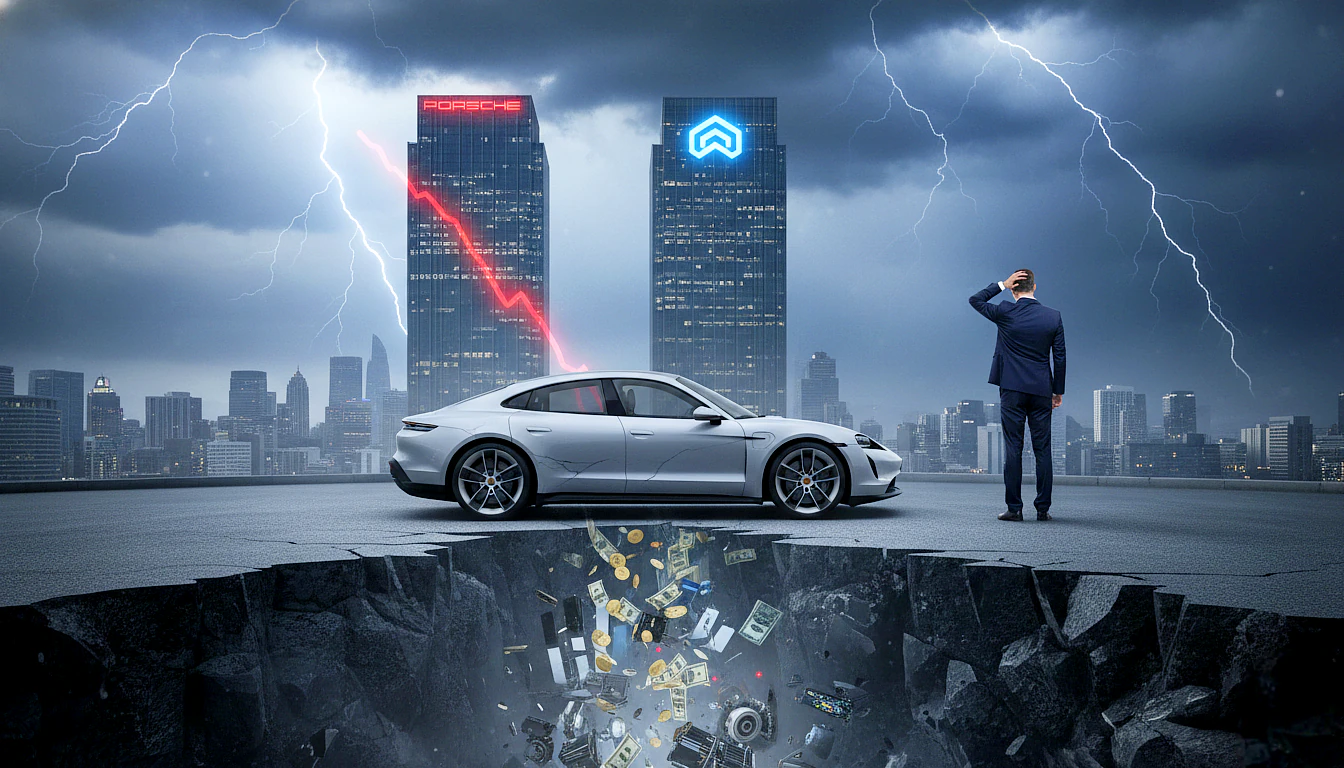What brought down Porsche? The luxury brand lost half of its value and saw sales drop by 21%. Is it China’s fault or pricing arrogance?

Porsche, a global symbol of German engineering and high-performance luxury, is at the epicenter of a financial and strategic crisis that has shaken the automotive industry. In just a few quarters, the brand’s profitability strength has unraveled, culminating in a 90% drop in profits and the forced departure of its CEO. The brand’s prestige is at stake, and the turnaround requires a restructuring that the new leadership has already described as “the most difficult job” in the sector.
The Devastating Financial Impact and Leadership Decline
Porsche’s financial landscape has transformed from an enviable money-making machine into a minefield of instability. Historically, the automaker boasted profit margins above 17%, a benchmark for the luxury industry. Today, these margins have fallen to single digits, directly reflecting investors’ loss of confidence and operational confusion.
The share price of Porsche AG has been cut in half amid three consecutive quarters of declining global sales. In the third quarter, deliveries fell 21%, a catastrophic sign that demand has not only stagnated but is rapidly declining.
The financial crisis was only a symptom of a top management failure. Then-CEO Oliver Blume attempted a risky maneuver by combining leadership of Porsche with that of the vast Volkswagen Group. Internal sources indicate that this dual leadership
resulted in decision paralysis. The strategic focus disappeared, crucial decisions on electrification and costs were postponed, and accountability became diffuse. The result was Blume’s forced dismissal, which, despite being announced as an “agreement to separate,” represented a vote of no confidence from the powerful Porsche and Piëch families.
The Strategic Failure of Electrification: Supercar Price vs. Chinese Performance
Porsche’s billion-dollar bet on transitioning to electric vehicles (EVs) not only failed to deliver expected returns but also accelerated the crisis. The problem wasn’t a lack of investment but product strategy and, crucially, pricing.
The launch of new EV models, such as the new electric Macan, demonstrated a profound misalignment with the market. Porsche demanded a 30% to 40% premium for the Macan EV compared to the gasoline version—a cost that consumers simply refused to pay.

The situation is particularly critical in China, a market that sets global trends in luxury and technology. Chinese consumers have redefined the concept of luxury, prioritizing technology, autonomy, and value instead of just branding. While Porsche hesitates, innovative local competitors are dominating the space:
- Superior Technology at a Fraction of the Cost: Brands like Zeekr (with the 001 model) are offering hypercar performance—such as 1,000 horsepower and superior range—for less than half the price of an entry-level Taycan.
- Challenges for the VW Group: What is happening with Porsche is a warning for the entire group. To understand how Volkswagen is trying to respond to the rise of Chinese competition, see what VW is doing with the ID. UNYX 08 to try to beat BYD in China.
The “German Premium”—consumers’ willingness to pay double just for the prestige of a Stuttgart or Munich badge—is collapsing. This erosion of value not only affects EVs but also raises questions about the future of all German engineering, even as some continue to redefine engine performance, as shown by the MTM RS6 Pangaea GT with 1,100 HP.
Michael Leiters’ ‘Impossible’ Challenge and the Necessary Turnaround
To orchestrate the comeback, Michael Leiters has been appointed as the new CEO. Leiters brings an impressive resume, with experience at Ferrari and McLaren, as well as a long previous tenure at Porsche. However, he takes over a company where brand image oscillates between legacy and irrelevance in the new digital landscape.
Leiters publicly acknowledged the magnitude of the mission: he is in the “hardest job in the automotive industry.” The recovery won’t be simple but is based on four key pillars:
- Pricing Strategy Adjustment: Stop charging “supercar money” for vehicles that no longer offer exclusivity or cutting-edge technology compared to Asian and American rivals.
- Operational Cost Control: The high production costs in Germany demand radical optimization, including the possibility of reassessing manufacturing locations.
- Defining a Unique Electric Identity: Porsche needs to go beyond simply electrifying existing models. It is crucial to design EVs that redefine the brand’s driving experience, ensuring that prestige extends beyond aesthetics. The Mercedes CLA Electric, for example, is a competitor that arriving in China to topple the Tesla Model 3 with 866 km of range, demonstrating the aggressiveness of competitors.
- Leadership Stability: High executive turnover undermines confidence. Leiters needs time and autonomy to implement structural changes without the paralyzing interference of the Volkswagen Group management.
If Porsche manages to rebalance its high-performance DNA with the technological innovation demanded by the market, there is hope. As electrification advances, Porsche knows that its core business of classic sports cars like the 911 (a monster that, in the Turbo S 2026 version, can go from 0 to 100 km/h in 2.2 seconds) must be preserved, even in specific niches, to maintain loyalty among the most traditional clientele.
The Porsche crisis is fundamentally an account reconciliation for the entire German automotive industry. The luxury of 2025 is no longer defined by hand-stitched leather but by smart technology, efficiency, and the ability to innovate rapidly. The rise of revolutionary batteries, such as Toyota’s solid-state batteries that guarantee 1,000 km of range, shows that the tech race is far from over. Porsche needs to prove that its legacy is a foundation for the future, not an anchor dragging it into the past. The time for the German automaker to stop hesitating and deliver the performance its name promises, both on the track and financially, is running out.
